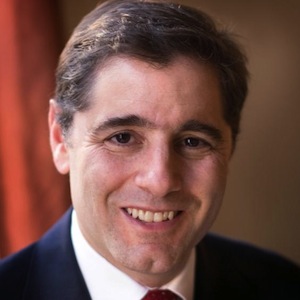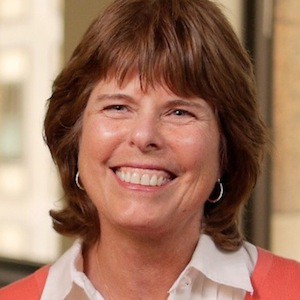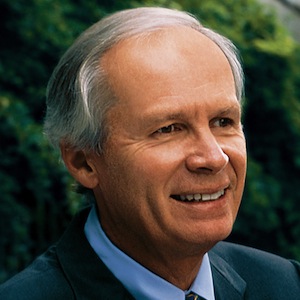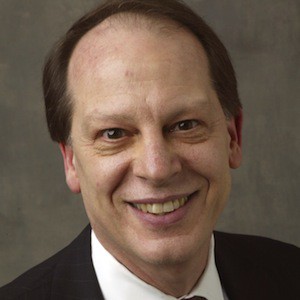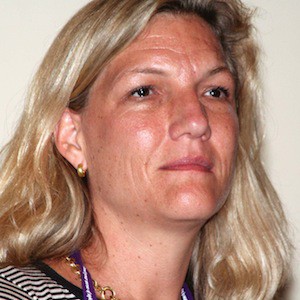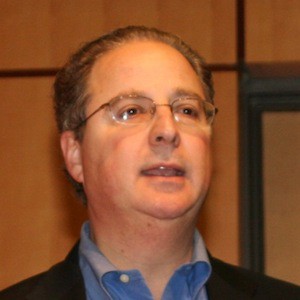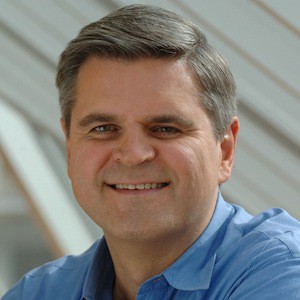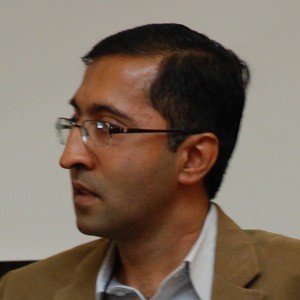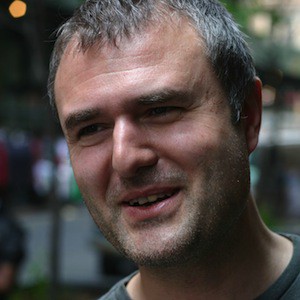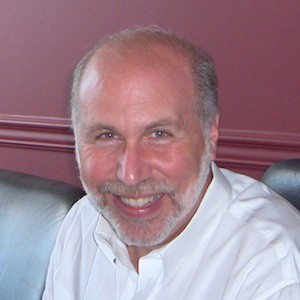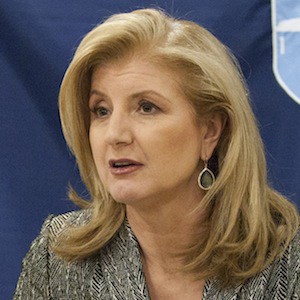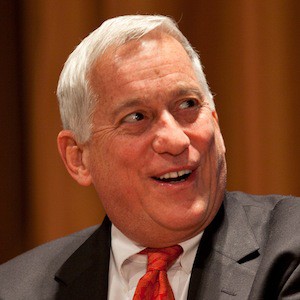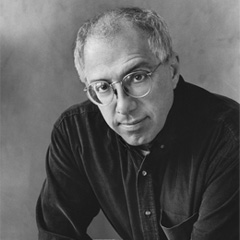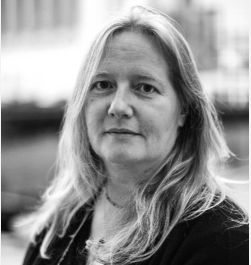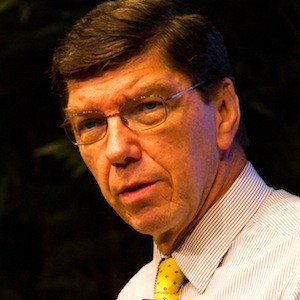Paul: It is Friday, April 13th. This is Paul Sagan in New York, Martin Nisenholtz in Cambridge and Chairman Genachowski in Washington. Thank you for joining us.
Julius: It’s great to be here.
Paul: Why don’t you give us the two minute resume, because I think it’s obvious what you do and have been doing for the last few years. But you actually came to this, not necessarily in the traditional Washington way, but with a content information and even a news background at Beliefnet. Maybe set that stage and then we’ll jump right into the topic.
Julius: For a little more than a decade before taking on this role as chairman of the FCC, I was in the Internet and media space in the private sector. For the largest piece of that, I was a senior executive at IAC Interactive Corp., which owned and operated a number of Internet media and e-commerce businesses, from Expedia to CitySearch to USA Network and Sci Fi Channel. The Beliefnet piece that you mentioned, I was on the board and an investor in Beliefnet, which was the largest online spirituality site. I was also on the board of an online content company called the Motley Fool. In the “for what it’s worth” department, at Columbia for college, I was not only around the clock with the “Columbia Daily Spectator,” but I relaunched Columbia College’s oldest newspaper called “Active Columbiana” to compete with the Spectator, which was great fun. In college, they had a publication called Newsweek on Campus. And I interned at the “Columbia Journalism Review” and I worked for Fred Friendly, the former president of CBS News when he was at Columbia working on the media and society seminars.
Paul: A long background in and around the space. You came to this job in Washington, and one of the things that you did was clearly worry about the state about where journalism and news was going to go because after the Knight Commission report came out, you commissioned a staff to go look at this issue of journalism in communities and concluded a few worrisome things. Can you share that and your thoughts and then thoughts about are we going on a better or scarier path going forward.
Julius: One of the central goals of the FCC since its creation has been having a vibrant, healthy news and information world in the United States serving the information needs of all of our communities. This is always a challenging job for the FCC because we are and should be prohibited from doing anything that violates the First Amendment. The agency has tried to be thoughtful over the years with how do we ensure that we have a communications landscape that fosters journalism, that fosters news, that fosters the provision of local information without, in any way, compromising vital free speech principles. Point number one. Point number two is, it was very clear to the Knight Commission, to me, to any of us who were around the space, that the digital revolution was having, is having a significant disruptive impact on the provision of news. You don’t need to be a deep researcher to know that local newspapers have been under tremendous pressure for some time. It’s unfortunate. We’ve taken it for granted at this point, but newspapers have shut down. Ten years ago, people would have thought, “Well, that’s crazy.”
And there have been significant cutbacks in resources directed at local news, at local TV and local radio. Following up on the suggestion of the Knight Commission, which I supported, and following up on our broadband plan, which focused not on news and content issues, but on what do we need to do as a country to unleash the economic opportunities of wired and wireless broadband?
Following up on that, I commissioned a report on the information needs of communities in the digital age. By commissioned, I mean we put together a team here at the FCC and brought in a terrific former journalist and former Internet entrepreneur named Steve Waldman to run this effort. And he produced his report, at this point, about two years ago. It’s called the “FCC’s Report on the Information Needs of Communities.”
Paul: And it concluded some worrisome things. Not all, but some. What did you do after that and how do you think about the government’s role going forward because, as you said, you have to be very mindful of the First Amendment issues. The traditional, I think, place that the FCC’s nose went into the tent here was either monitoring the broadcast world and access rules or the cross ownership with print, but otherwise didn’t really have any formal involvement in journalism on the Internet or even print journalism. But those worlds are colliding, or have collided and come together, and that’s changed, at least your view and the view of others of the government’s possible role. Certainly, people are going to look to you or your successor and Washington to play some role or not in this. It would be great if you could speak to the questions embedded there.
Julius: Let me describe the report a little bit…
Paul: And we’ll link to it off of this interview, but I think, given the headlines would be really helpful.
Julius: Great. I have to say, I’m proud of the report. It was recognized by a pretty broad set of people who have different perspectives on what the problem is and what the solution might be as a thorough, fact based assessment of the landscape. It found that there were both opportunities and challenges and then it tried to be concrete about what the challenges are. On the opportunities side, let me start there before we get to the challenges, new communications technologies, the Internet, mobile, are creating new distribution channels for news and information at much lower costs of distribution. You or I could start a news and information business tomorrow on the Internet at a much lower cost than if we wanted to do exactly the same thing 20 years ago and we needed to launch a newspaper or TV station. This is a general fact about the Internet and opportunities for new businesses. The cost to get started and the barriers to entry are a lot lower, particularly in a world where we preserve a free and open Internet.
In fact, there are lots of examples of online entrepreneurs that have started news and information businesses. But the report also found that, when it comes to news in particular, while the distribution costs may be a lot less than they are historically, it still costs money to report the news. Reporters don’t work for free, nor should they. The business models to generate revenue to pay for reporters, even on the Internet, are not where they need to be to support a robust reporting operation.
The report found a few different things. I think it tried to be intelligently nuanced. It identified the largest challenge around local news and information as opposed to national news and information. Local journalism, covering the mayor’s office, the governor, state, city, local agencies, that’s where we’ve seen the greatest cutbacks and the hardest economic challenges, as compared to national news. That doesn’t mean there aren’t issues there, but there continues to be vibrant coverage of Washington.
Local news and information, particularly in the area of accountability journalism is where the report found the biggest challenge. The report drew a distinction that others have drawn, but it’s important to keep in mind, between opinion and journalism. The Internet is great to facilitate the wide distribution of many different opinions. It’s much harder when it comes to building a reporting entity, particularly if what you’re trying to do is build reporting teams in lots of different local communities. So those were, essentially, the findings of the report.
Paul: It leaves the natural question which is, what is to be done and does the Internet, as it evolves, fix the problem or does it get worse, and where do we look for answers to that?
Julius: The report had a number of conclusions and recommendations, and some of them are broad in nature, but we had call it medium and long term optimism about these trends. One is doubling down, pressing forward on strategies to increase broadband adoption in the U.S. The number of Americans who could sign up for broadband, they have infrastructure available to them, but who don’t is very high. It’s about 30 percent of the country could sign up for broadband but don’t. We’ve got a 70 percent adoption rate.
Paul: And that’s very low compared to other developed nations, too.
Julius: I’m not sure that that’s true. It might be low compared to city states like Singapore, or countries like Korea, but it’s not low compared to Europe overall. It’s not low compared to China or India. It’s much higher than China and India, and roughly comparable to Europe, overall. In any event, it’s not good enough. It should be at 100 percent. When you think about it from the perspective of the economic models for online news, it’s a big deal because if you go from 70 percent to 100 percent, you’ve increased the potential market by almost 50 percent. In thinking about the economic model here, adding that many people to the base could have a very positive effect, number one. Number two, the report emphasized the importance of preserving Internet freedom and openness. If we move toward a world where content creators on the Internet have to pay, particularly on a discriminatory basis, to reach customers, that would be a negative for the economic model for newspapers, particularly startups. So that was a second major point. Then, the report said there are no silver bullets in solving this challenge.
It suggested a series of ideas against a backdrop of encouraging a willingness to experiment with First Amendment friendly ideas that could improve the ecosystem. What’s an example? There have been some interesting developments around non profit entities getting into the local news and information business. And the report described some IRS tax related challenges that make that harder than arguably it should be. We’ve actually been encouraging the IRS to take a look at this and remove barriers to non profits providing local news and information services.
The report had some recommendations around increasing transparency of government information. Because one of the things the Internet does, potentially, is lower the costs of reporting if government information can be accessed more cheaply. So the more that everything the government does is easily available online, the lower the cost of collecting information and reporting.
If everything the government does is streamed online, if all of the documents and all the information is available online, it means if you’re a local reporter, wherever you are, you can stay in your office or even stay at home and get all that information. Pushing forward on transparency and disclosure was an important recommendation. The report suggested that the FCC experiment with modest reforms to broadcast ownership rules that could help local journalism. An example might be allowing radio stations and newspapers to combine and see if there could be efficiencies that could help local newspapers succeed.
And then, in general, the report encouraged us to do what we’ve been doing, which is look at all the ways that there might be barriers to local broadcasting, TV and radio. From becoming multi platform providers and increasing their revenue by seeking revenue from multiple platforms. So those were some of the recommendations in the report.
Paul: Looking forward now, and it will be someone else’s problem because you’re going to leave office, so not asking you to make a partisan speech or speak for someone’s future policy, but the FCC has a mandate to try to keep news and information local, diverse and accountable, I think. Talk about the challenges in the Internet age with the questions of consolidation, the things that will likely come before the government and certainly the commissioner, ownership of broadcast, more than anything else, because that’s one of the things that you’re asked to rule on. But it will be tied to newspaper ownership. You talked about the need for local journalism, which often comes from print, which is really still in a free fall. And, as you said, some newspapers are disappearing or, if not disappearing entirely, they’re disappearing almost by the day. Monday’s gone. Tuesday’s gone. Wednesday, Thursday, Friday, Saturday, Sunday is all that’s left in some communities. Can you frame the questions and maybe how, at least the things that will get put on the scales to balance the decisions that the commission will probably have to think about and that the industry ought to be preparing for.
Julius: I guess a couple of…
Paul: I’m just going to tilt the camera down a little bit. We seem to getting a little more ceiling. There we go.
Julius: Is that all right?
Paul: Yeah. Good.
Julius: A couple of points. I know you didn’t mean to say this, but it’s worth pulling this out. It seems to me, an appropriate goal for public policy here is not to preserve newspapers…
Paul: Absolutely. No question.
Julius: But to preserve news. I know you weren’t saying anything different, but it’s important because sometimes it’s not clear. Thinking about what the FCC can do in all these different fronts to encourage successful multi platform efforts is a big part of it. Two points on ownership, and there’s a proceeding now open at the FCC, it’s being actively deliberated, so I’m limited in what I can say.
Paul: I wasn’t asking you to comment on one case, but more the broader question.
Julius: It’s essential for the FCC to recognize the ways in which the world is changing and take that fully into account in reviewing our rules, including our rules around ownership. It seems to me that the agency can’t ignore the efforts of the digital revolution on the provision of local news. The agency has a responsibility to ask itself, “Are there any ownership rules in place that limit newspapers,” because the rules apply to newspapers and not news, “that are causing more harm than good, and what should we do about that?” I guess two points on the other side that the agency is also is keeping in mind as it reviews this. One is that a world in which there is universal broadband adoption is different from a world in which there is 70 percent broadband adoption for purposes of these issues. Because some people say, quite rightly, that people who have online access are looking at a different set of news and information sources than they were looking at before the Internet. And that’s true.
But it’s also true if 30 percent of people aren’t online, they’re not looking at that full range. It seems to me that one of the benefits of pushing for greater broadband adoption quickly is not that it improves the economic model for news, as we talked about earlier, but it also affects the analysis of the agency when it comes to rules that were based in a different world. The FCC has to take that into account.
I think you mentioned that diversity is also a statutory objective of the FCC and the trends in diverse ownership in the broadcasting space have been going down. Looking at that question is also part of the FCC’s work as it reviews the ownership rules that are on the books.
Martin: Can I just interject for a moment? Are you done, Paul? Or…
Paul: Go ahead. I’ll follow up after. But go ahead, Martin.
Martin: No, go ahead. I want to make sure you finish your points. It would be best if…
Paul: I had some questions in a couple different categories, so you should go right ahead.
Martin: Great. I just wanted to reel back a bit and talk a little about the business model because your background obviously combines a very deep sense of what has to happen in order to create a business in this area, as well as the public policy implications. I think the question of free has been on a lot of people’s minds from the beginning. When all of these businesses collided, some had backgrounds in free. Some didn’t. But free became the ethos of the Internet. The idea, of course, was that advertising would be robust and it would make up for this notion of free. And that, clearly, has not happened. In fact, the opposite seems to be happening where very large entities, like Google and Facebook, use data, in essence, across the web to target around intermediaries.
I guess my question is, can you comment at all on how you see the business model emerging in this totally open world and maybe connect that a little bit to two other things. One, the very closed model of cable, the walled garden cable model, where there is an incredibly robust news infrastructure, in some ways both local in some communities but certainly national, global. And in mobile, which has traditionally been very locked down and controlled, and is clearly the future, in some sense, of news usage. I know there’s a lot there.
Julius: Great questions. Let me pull out two. One is the free versus subscription, and the other is cable. On the free versus pay, the first thing I would say, and it’s important to recognize this is it’s not, at least I don’t see it as, a regulatory issue. It is a business model issue. I certainly see what you see, which is that, for many newspapers that moved online, the decision to offer news free at the beginning has made it hard to go backwards because consumers get used to having it for free. But at the same time, we’re seeing more and more experimentation now with pay models. You’re certainly very familiar with the “New York Times” approach, the “Wall Street Journal.” To me, I think this distinction that I tried to make before between national and local is important, and the question of, for local news entities, which is where I think the biggest problem is, not that there aren’t problems nationally, but for local news entities, what does the business model look like? You have to have a mindset that’s very different from many other online players. As Internet companies launch today, the denominator that they’re looking at is not a local community.
It’s not even the American population. It’s the global population. And they’re running their models off of that. If you’re trying to provide local news in Cincinnati or Des Moines or Charleston, West Virginia, you can’t build your economic model the same way. That is a real challenge. Now, you don’t need as many reporters to cover Cincinnati as you do to cover the world. I tend to be an optimist in how this will play out over time.
I’m personally convinced, based on all my experience, that vibrant local news and information has real value to people in their communities, and the entities that get the product right will find that people will pay directly or indirectly for that product because it’s so important to their lives. A couple of other points on this and thinking about newspapers historically and cable. The two of you have great experience in both newspapers and cable so I’m happy to be corrected.
One of the things that I think has happened in the news world over time when it comes to local is that there was an artificial definition of local that came into being because of what natural distribution of newspapers were. For example, I live in Washington DC. Let me not pick a single market, but I think newspapers tend to think of their relevant local market as the broad DMA or community to which they’re distributing newspapers.
Paul: That was probably an economic imperative, right? The scale question and the cost of production helped them.
Julius: I think that’s right. I also think they benefited from limited competition.
Paul: That’s right. The barrier was high to get in. And a broadcast license, just to add to that, also added to this mix, which was the broadcaster had a DMA they had to cover. They couldn’t segment that item.
Julius: Exactly right. Broadcasters had no choice. They could only broadcast to the full DMA. And newspapers had no pressure. But I think both of those entities were actually under serving the way people actually lived. People are very interested and concerned about what’s happening in their neighborhood. What’s happening with crime in their neighborhood? What’s happening with stores and streets? What’s the mayor or city council doing that affects my neighborhood, my schools? Many people say, and I think this is probably right, that in moving online, newspapers were slow, and, I would argue, are still slow, in shifting to that, some people call it hyper local view. In some ways it’s more expensive to do it, but I also would argue that that’s where the real value and need is. So I’ll make that point, and let me make a point about cable, Martin. The new technology of cable, you’re completely right, has led to certainly an increase in nationally distributed opinion and an increase in national and international news. You can’t argue with CNN.
The effect on local news, I think, has been much less. There are obviously some markets where the cable company offers a local news channel and those are great. But one of the findings of our report was that, overwhelmingly, most communities don’t have local cable news. Seeing the cable industry increase its commitment to local cable news channels is something that would be a positive, and then if that were done in a multi platform way would be a further positive.
Martin: Can you comment on the mobile point at all? I know you’ve thought a lot about mobile, especially in relation to the open Internet. A comment would be helpful, just because so much of the usage is now trending in that direction.
Julius: I tend to think that each of these new distribution platforms are new opportunities to reach an audience, to reach an audience more frequently, and to generate incremental revenue. Incumbents tend not to look at new distribution channels that way. They tended to look at new distribution channels as threats. This has been true historically. They’re often proven to be wrong. The broadcasting industry historically opposed the introduction of cable television in the United States, because they were worried, and understandably if you put yourself in their shoes, that cable would be a threat to the economic health of local broadcasters. As it turned out, cable was one of the best things to happen to local broadcasters that were providing content of real value, because, through retransmission consent fees, it creates a new revenue line for broadcasters. So your answer about mobile is I fundamentally look at mobile in that way. It’s a new way to reach an audience. It’s a way to reach an audience with much much greater frequency. People are looking at their mobile device much more frequently than they’re looking at their PC and more frequently than they’re looking at their TV.
Obviously there’s a tremendous challenge around business models. I’m not saying it’s easy and I’m not saying that it’s inevitable that people will unlock that value, but I would bet that that would happen. We’ve seen over the course of American business history, when it comes to news, information, content and different distribution channels, is that there are opportunities for innovation not only on the technology side but on the business model side. And that they relate to each other because the nature of the content itself shifts from platform to platform.
In my view, the entrepreneurs, whether they’re new start ups or traditional entities, that say, “Alright, mobile. Everyone’s checking their mobile devices all the time. What does that mean for how we provide news and information to them, and what can that mean for economic models that make sense?” I believe that will be unlocked and the entities that unlock that will generate a tremendous amount of value and that it will be a boost to the whole ecosystem and the provision of news and information.
I fundamentally believe that having people with more access to information, looking at different screens more often, will lead to the rise of business models that fully take advantage of that opportunity and ultimately provide the revenue and the resources to support reporting operations. Transitions and disruptions are hard.
Martin: Just a last point before I pass it back to Paul. Sitting here up in Cambridge, the Boston Globe and Boston.com have been trying to get the hyper local news idea done for years. It’s been something that we focused on five, six, seven years, maybe even a decade ago. Just the economics are just very, very tough. The willingness to pay is, let’s just say, not high. And the advertising economics are tough. I hope that you’re right. I hope that the entrepreneurial community can solve this issue, but so far it’s been a tough go.
Julius: I totally recognize that. It could be a tough go for a long time, and it’s part of the reason why we have to look at other creative ideas like non profits, like various incentives or removing regulations that could be helpful. But I would make the following point, and I make it to you, Martin, because I think we had this conversation six, seven, eight years ago. You’ll remember that the company I used to work for owned a business called CitySearch.
Martin: Yes.
Julius: CitySearch was one of the early businesses that said, “Well, local businesses, local advertisers are moving online. Consumers are really interested in local information about restaurants, etc. We’re going to jump in there and take advantage of those trends and create a successful business.” And year after year, CitySearch did not quite achieve what logic told us it should, because consumers wanted the local information and small businesses ought to want to reach consumers through that channel. It turned out that the thesis was completely right. The effort was a little bit early. Over time, others developed different business models that really brought together local merchants and local customers in what is now a very thriving space. I’ll give you one other example because I think these things all relate to each other. I remember a point in time when John Malone, Paul, you’ll remember this because you were in the industry at the time, this is probably 20 years ago, and John Malone talked about a 500 channel cable universe.
Martin: Remember it well.
Julius: And people thought, “That’s crazy. That will never happen. There’s no model for that. The technology won’t provide for that. It’s crazy.” And then one year went by, two years went by, and three years went by and four years went by and five, and the 500 channel universe didn’t come. And everyone said, “Malone, totally wrong. This world is never going to come.” And people went on and did other things. Then we all woke up one day, and we had 800 channels [laughs] in our home. I think that from trend to changing behavior of consumers and merchants sometimes takes a little bit longer than we think. I think it’s probably a historical pattern that people give up hope often just at the moment when the magic will happen. Are we at that moment in local news and information right now? I’m not really arguing that. We may be one, two, three, four, five, six years away. But, I do think these basic trends of people value local news and information, they’re consulting their digital devices more and more frequently, that that will result in an economic model that supports the provision to people of news and information that they find valuable.
Paul: Let me just ask, maybe, one last question.
Julius: Paul, I think I just have a few more minutes, if that’s OK.
Paul: I’m trying to watch the clock and be mindful of that. You’ve been generous with your time. We really appreciate it. Let me try to weave this back together because a lot of what you described and we know existed in the past that provided the news and information came as a packaged bundle. I think, as you really almost implied there, some of the reporting, especially the inefficient kind, the accountability journalism, got a subsidy from the advertising package that came bundled together. That hasn’t happened in online. Online is the great dis aggregator. Even in news, it takes from brand name to home page to section to story to Tweet, which isn’t even often a full sentence. A lot of what we’ve seen in local information models that are working today, say around food and restaurants, work, but they don’t link to accountability journalism. I just want to make sure that I’m following you that I think you would agree that that part of the puzzle’s not been figured out. That has to happen and that path is really unclear.
Julius: I completely agree that it hasn’t happened and that the challenges are very significant. But I would also argue that there’s tremendous value in local accountability journalism. People really want to get local accountability journalism about their communities, about things that really matter to their lives. My hope is that innovators in this realm will continue to mine it. I don’t know if they’ll be existing companies that figure it out or whether they’ll be start ups, but I don’t think we’re talking about trying to figure out a business model to give people broccoli that they don’t want. I believe that people really want local accountability journalism because they care about their home, they care about their kids, they care about their lives and they want to be engaged citizens. Someone will figure out how to provide that and build a business model around it.
Paul: I think that’s a great place to stop. And we will hope that happens, and probably for all these communities, the sooner the better.
Martin: Thanks so much. Really appreciate it.
Julius: Good luck with your project. This is just wonderful that you’re doing this, and I’m happy to try to help.
